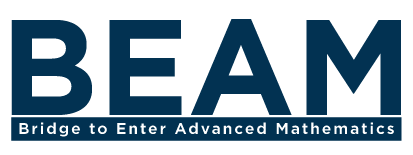Supermath: The Power of Numbers for Good and Evil
by Anna Weltman
“Math is, at its core, problem solving,” writes Anna Weltman.
But, she admits, if your experience of math all happened in a classroom, this might sound a little hollow. Math problems in school often don’t seem like real problems, at least not problems we really care about answering. (A problem, notes Weltman, is not “an exercise in using a technique that someone taught us.”)
School math can feel pretty disconnected from, say, showing that our electoral system is unfair, or figuring out what symbols on an ancient tablet represent. But math can solve these problems, says Weltman. In fact, math can solve a lot of problems that might seem more cultural than mathematical, because math (like anthropology or sociology or science) is a cultural practice, a practice that can shift and change as cultures change; just ask the Oksapmin of Papua New Guinea.
In Supermath, Weltman takes on incredibly diverse topics, from Incan Khipu (and the Oksapmin of Papua New Guinea) to a perfect-checker-playing computer named Chinook to the Optimal Stopping Algorithm and Twin Primes Conjecture. If this is beginning to sound a bit intimidating to you, don’t worry; Weltman presents sophisticated concepts in clear and understandable language.
[Full disclosure: Another topic that Weltman writes about is our organization, BEAM. We’d recommend the book even if BEAM wasn’t part of it, but we are, so we thought you should know.]
Weltman’s point is not that math can solve everything, or even that math is always used for good (thus the “evil” in her title). Take Weltman’s example of setting bail. Algorithms can (and do) decide how bail is set in some places; but when designing algorithms to make such complex decisions, it’s incredibly difficult to account for all the criteria you (should) care about. Too often the outcome is an algorithm that is biased, even if unintentionally so — this has been proven to be true in the case of bail — because humans write algorithms and humans have biases.
Algorithms can also be biased by design. Think about voting districts. Algorithms are very efficient at drawing gerrymandered voting districts. It turns out, in fact, that drawing districts that everyone thinks of as fair is much harder than drawing districts that are clearly not fair. But proving that an algorithm is unfair turns out to be pretty hard; it takes an algorithm to expose an unfair algorithm.
How can math do better? One way is by providing more opportunities for those who have been excluded from STEM, and math in particular: people of color and women. Weltman notes that this is much more than an academic problem. When people of color and women are shut out of math they miss out on the opportunity to join a prestigious and lucrative field. They are denied opportunities to solve problems that affect their communities. When whole groups, like people of color, aren’t adequately represented among problem solvers, inequities are much more likely to result.
One answer to How can math do better, then, is that math can open its doors to underrepresented groups. But what does it take to become a professional mathematician? A lot more than doing well in school math, at least for a lot of mathematicians.
Many mathematicians grow up with a whole math ecosystem around them. They may have a mathematician in the family; they almost certainly have adults in their lives to help them navigate the world of math camps and teams and competitions. They may be encouraged to learn advanced math concepts starting at a young age. They often see others who look like them in this mathy world, giving them a sense that they belong.
For those who don’t see themselves reflected in this world, math can seem like a pretty foreign and unwelcoming place.
This, writes Weltman, is where organizations like BEAM step in. BEAM both provides opportunities, through summer programs in advanced math, and also connects students to other opportunities, like other summer STEM programs, good-fit high schools and colleges, internships, and ultimately, jobs.
BEAM also helps students build a rich community with their mathy peers. Finally, BEAM helps students develop their own voices to push the culture of mathematics to accept them and to value them for who they are.
Weltman closes her book with the unlikely story of Marjorie Rice, who in 1975 at her kitchen table discovered a new type of pentagon that could tile flat space. She was a 52-year-old “housewife” with one high school math course under her belt. Yet she found something no one had found before. Was it an earth-shaking discovery? No, writes Weltman, but it was a beautiful piece of math. “Even more importantly, this beautiful piece of math had the power to change Rice’s life.” And that, concludes Weltman, is a superpower.
“The power of mathematics,” concludes Weltman, “comes in part from the problems it solves. But the mathematicians, likely and unlikely, are ones who wield it. Math would have no power without them. Let’s distribute that power widely and see what people do with it.”

